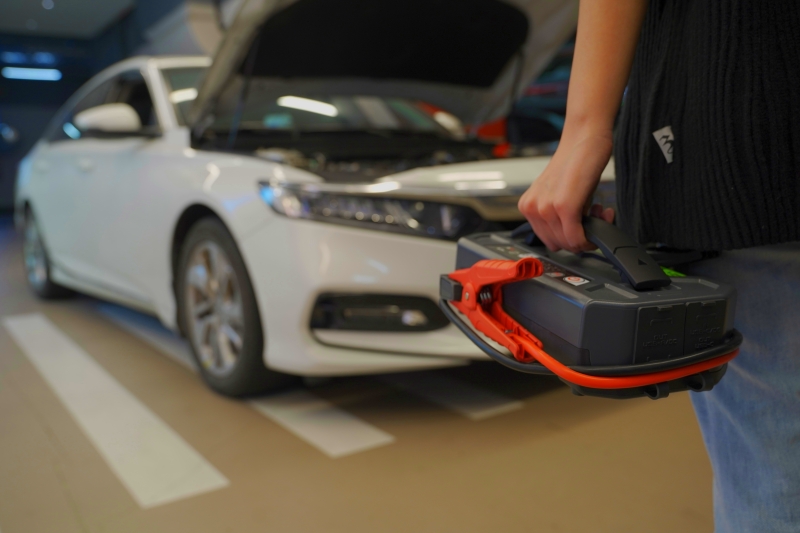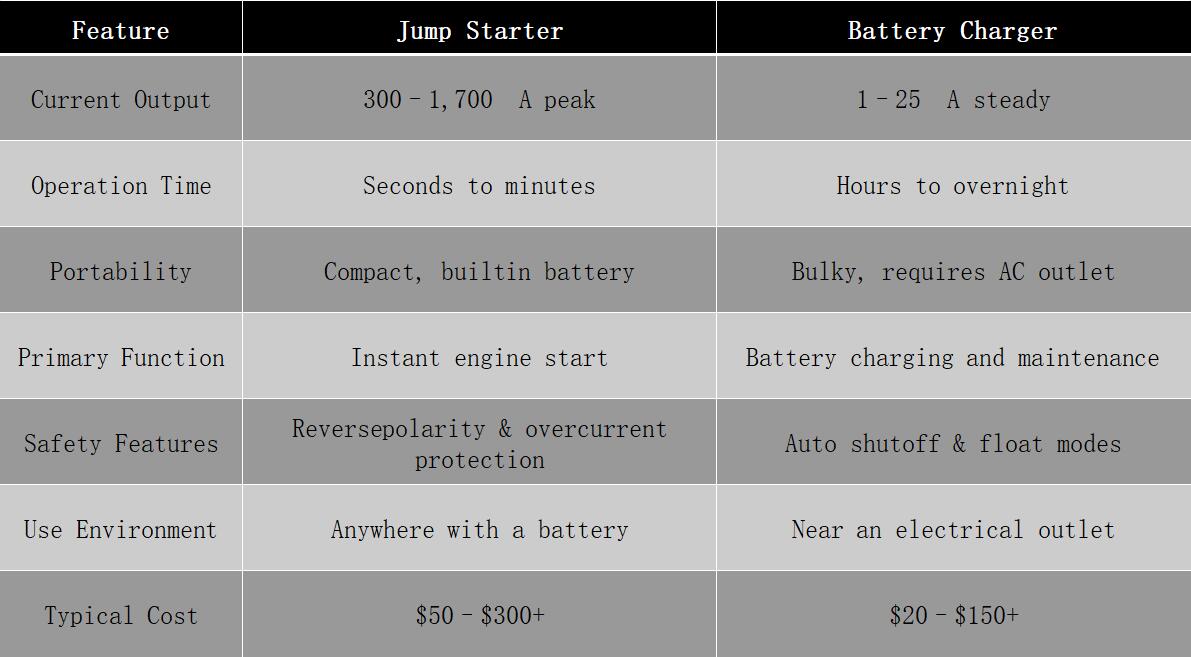 Release time: Apr 18, 2025
Release time: Apr 18, 2025
Here’s an analysis of the differences between a Jump Starter and a Battery Charger, to help you choose the right tool for emergency starts versus routine maintenance.
In emergencies, a jump starter delivers a high current pulse to crank your engine instantly, getting you back on the road fast, whereas a battery charger uses lower current over time to replenish and maintain your battery’s charge.
Definitions
Jump Starter
A jump starter is a self contained battery pack with built in jumper cables that provides a quick, high current (often 300–10,000 A) boost to start a vehicle without another car Wikipedia. It does not charge the battery—once the engine is running, the alternator takes over to recharge the battery.

Battery Charger
An AC powered device that slowly delivers 1–25 A of current to bring a battery up to its healthy voltage (around 12.6 V) over hours. It’s ideal for long term charging and battery upkeep, but cannot produce the instantaneous high current needed to start an engine.

Use Cases
Emergency vs. Maintenance
· Jump Starters are for emergency situations (e.g., winter mornings or accidental light drain).
· Battery Chargers are for vehicles in storage or when you have time to restore battery charge.
Time Required
A jump starter can fire up your engine in seconds.
A battery charger may take several hours or overnight to fully recharge a battery.
Technical Differences

Deeper Insights
Chemistry & Output
Lead acid jump starters deliver high current but are large, heavy, and self discharge quickly.
Lithiumion models have become popular since 2013: they’re slim, lightweight, and often include USB ports for device charging.
Charging & Maintenance
Jump starters don’t recharge your car battery—they only start the engine; you must recharge them after use.
Chargers extend battery life by preventing deep discharge damage.
Multi-Function Options
Modern jump starters often feature USB charging, LED work lights, and air compressors, making them versatile emergency tools.The Lokithor AW401 jump starter exemplifies this multifunctional design, combining five functions—jump starter, air compressor, power bank, LED flashlight, and water pump—in a single device.
Practical Tips
Keep Both: Carry a jump starter for emergencies and a charger for regular battery care.
Follow Instructions: Always read the manual and wear gloves and eye protection to avoid incorrect connections or sparks.
Monitor Battery Health: If you frequently need a jump, have your battery tested or replaced to ensure reliability.
By understanding the immediate power delivery of a jump starter versus the gradual recharge of a battery charger, you can select the right tool for every situation—whether you need a quick engine start or routine battery maintenance.
Add:290 Lindbergh Ave.Livermore.CA 94551 (USA)
Ottostr. 11. 41352 Korschenbroich. Germany (EU)
TEL:+1-925-364-7166 (USA)
+49-(0)218-25700755 (EU)